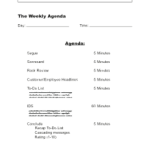
How confident are you with your last few hiring decisions? If your record has been hit or miss, chances are you that don’t have a solid process to attract, evaluate and ultimately hire people who are right for your company.
Find the Right People
The first order of business is to determine what “right people” means for your organization. Though all business leaders want employees who are committed, driven and hard-working, finding people who are the right fit for your organization means identifying the unique characteristics of your corporate culture.
One simple rule is to only hire people who possess your company’s core values. And the clearer you can be about what those values are, the easier it will be to identify the “right people” for your organization and weed out those who don’t belong.
Let’s say your company has the following clearly-stated core values:
1. Be Humbly Confident
2. Grow or Die
3. Help First
4. Do the Right Thing
5. Do What You Say
Use these values as the first benchmark for screening potential candidates. As you’re interviewing people, you know to probe and listen closely to what they say, looking for any indication that they do (or do not) possess these values.
Get Them in the Right Seats
Once you’re clear about who is a good fit for your organization, you must determine if they are equipped to do the job. In his classic book, Good to Great, Jim Collins calls this getting the “right people” in the “right seats” on the bus.
A simple way to determine who does and doesn’t fit in the seat is to develop specific interview questions that determine three things:
Keep it Simple
Hiring well isn’t an easy task, but it can be a simple one. In its purest form, great hiring is simply a matter of applying a process that helps uncover the right people (those who possess your core values) who fit into the right seats (i.e., they get it, want it, and have the capacity to do the job).
When you apply these rules, you’ll most likely see an increase in productivity and morale, while dramatically reducing employee turnover.
Regardless of your process, keep it simple and clear, and you’re more likely to hire with confidence and consistency. Now that’s a job well done!












































11710 Plaza America Drive, Suite 2000 Reston, VA 20190
703.278.CORE (2673)
You raise terrific points. A challenge? The drive to automate hiring process produces a data driven snap shot of the past…it does not reflect capacity more evident in the values you site as key. We are reducing people to data points. How do those metrics reflect values or capacity or intrinsic motivation? If you wait until the field for candidates is presented as metrics, you may have inadvertently screened out the very folks you desire.
Agreed…and great point Gwen. The hiring process can never boil down to simple metrics. But the better an organization can articulate its values and clearly identify the roles/responsibilities of each position, the more likely it will fill positions with the right people who are in the right seats. Thanks for weighing in!
As a consultant and team leader, I have had great success employing a 360 degree interview panel where seniors, juniors and peers participate in the vetting of candidates. Team members feel a sense of ownership in the process and enjoy having their voices heard, even if their favorite candidate is not ultimately selected. Moreover, the candidate gets a better feel for the culture and climate of the organization. Thanks for a good read Randy!
Thanks for your comment Jim. You bring up some good points, including the need for candidates to understand and get a feel for the organization’s culture to help them determine the degree of fit as well.